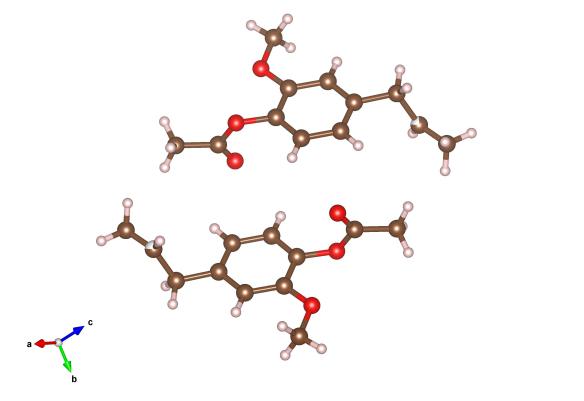Adapting a plant-based molecule – eugenyl acetate
Today is National Tree Day! To celebrate this our two posts this weekend are about very useful materials that have come from trees and plants. Today is eugenyl acetate.
What does it look like?

Image generated by the VESTA (Visualisation for Electronic and STructural analysis) software http://jp-minerals.org/vesta/en/
What is it?
Eugenol is a small molecule that is often found in essential oils, such as oil of cloves, nutmeg and cinnamon. On its own it give a pungent smell, and its antiseptic properties are used when combined with zinc oxide to make a paste often used in dentistry.
Where did the structure come from?
Unlike quinine, Eugenol is very insoluble in water which limits its use, both in perfumery and dentistry. It is also quite unstable in light and heat, so researchers have been investigating how to enhance its stability without changing its potential medical properties. One potential solution has been to add an acetate to the molecule, making eugenyl acetate. This crystal structure was determined by dos Santos et al. in 2009. The crystal structure is #702999 in the CSD.






